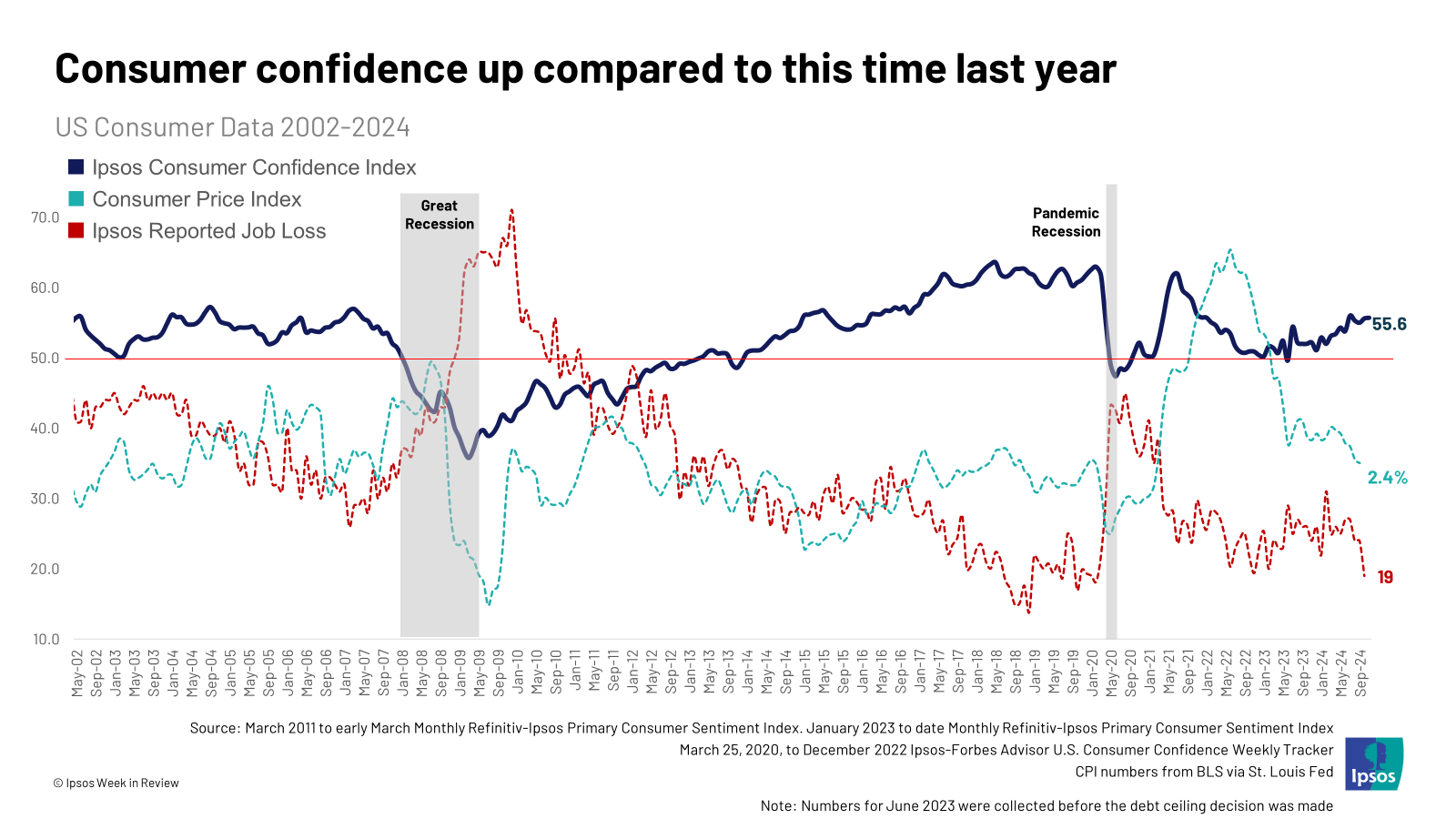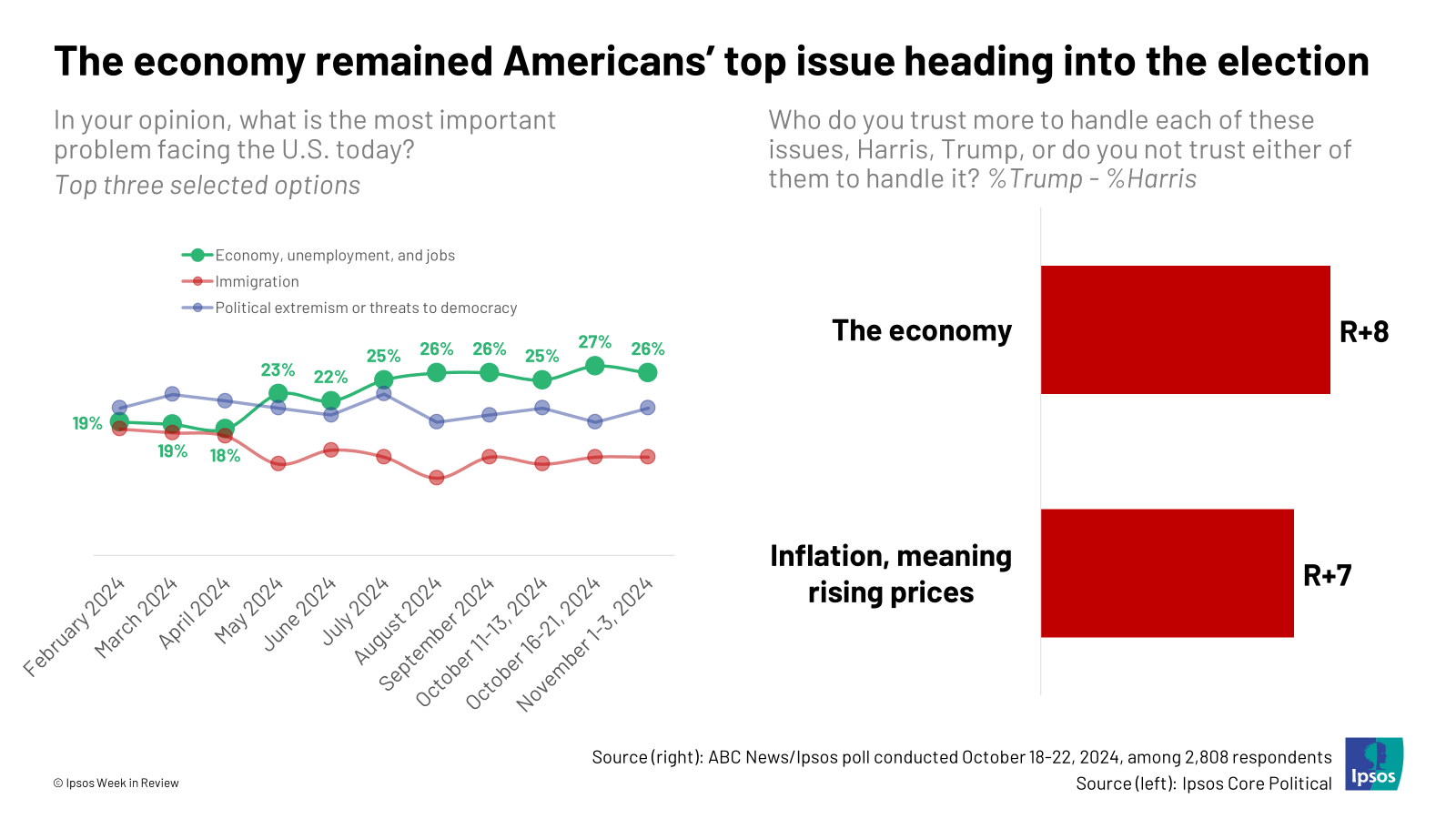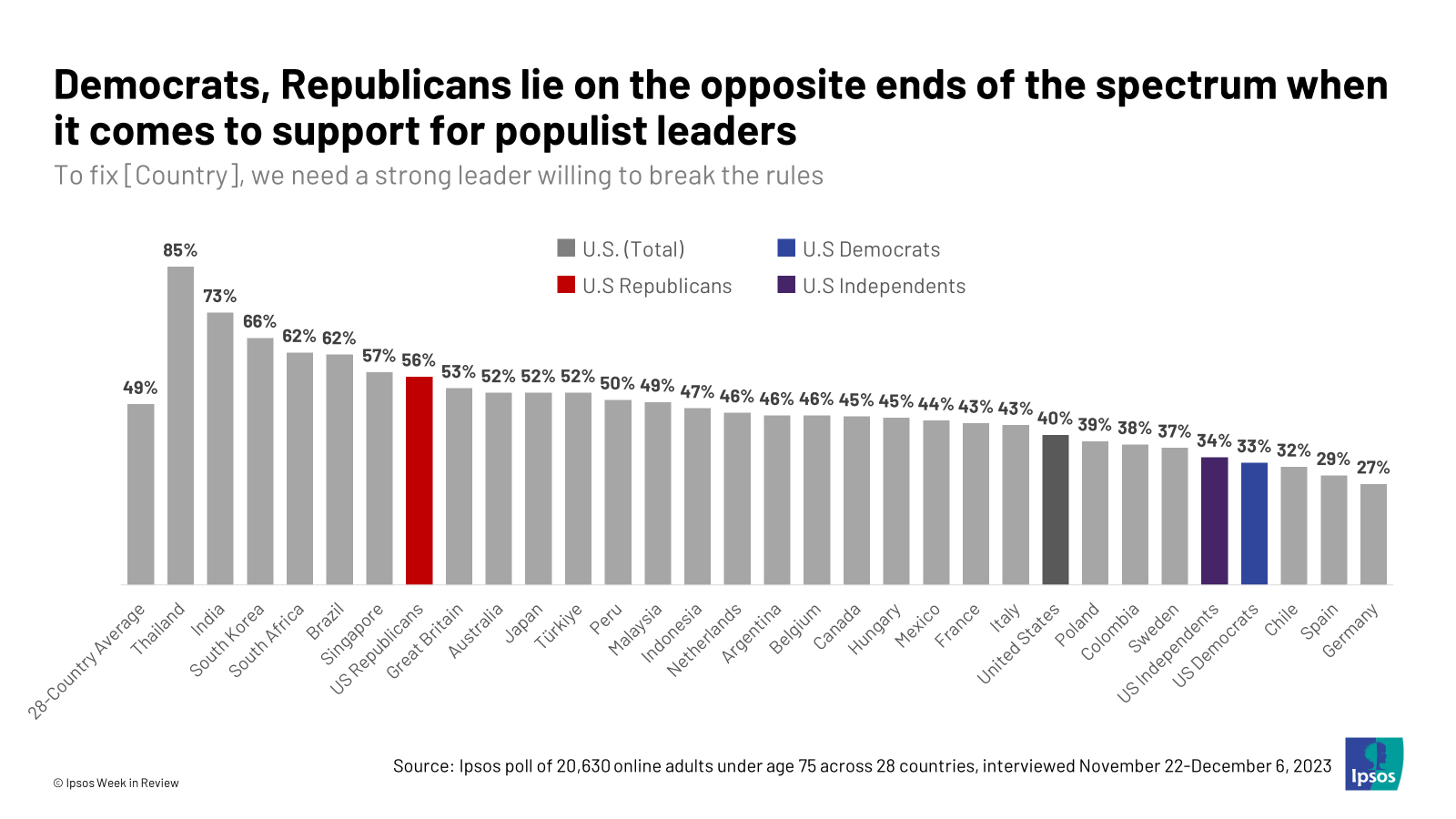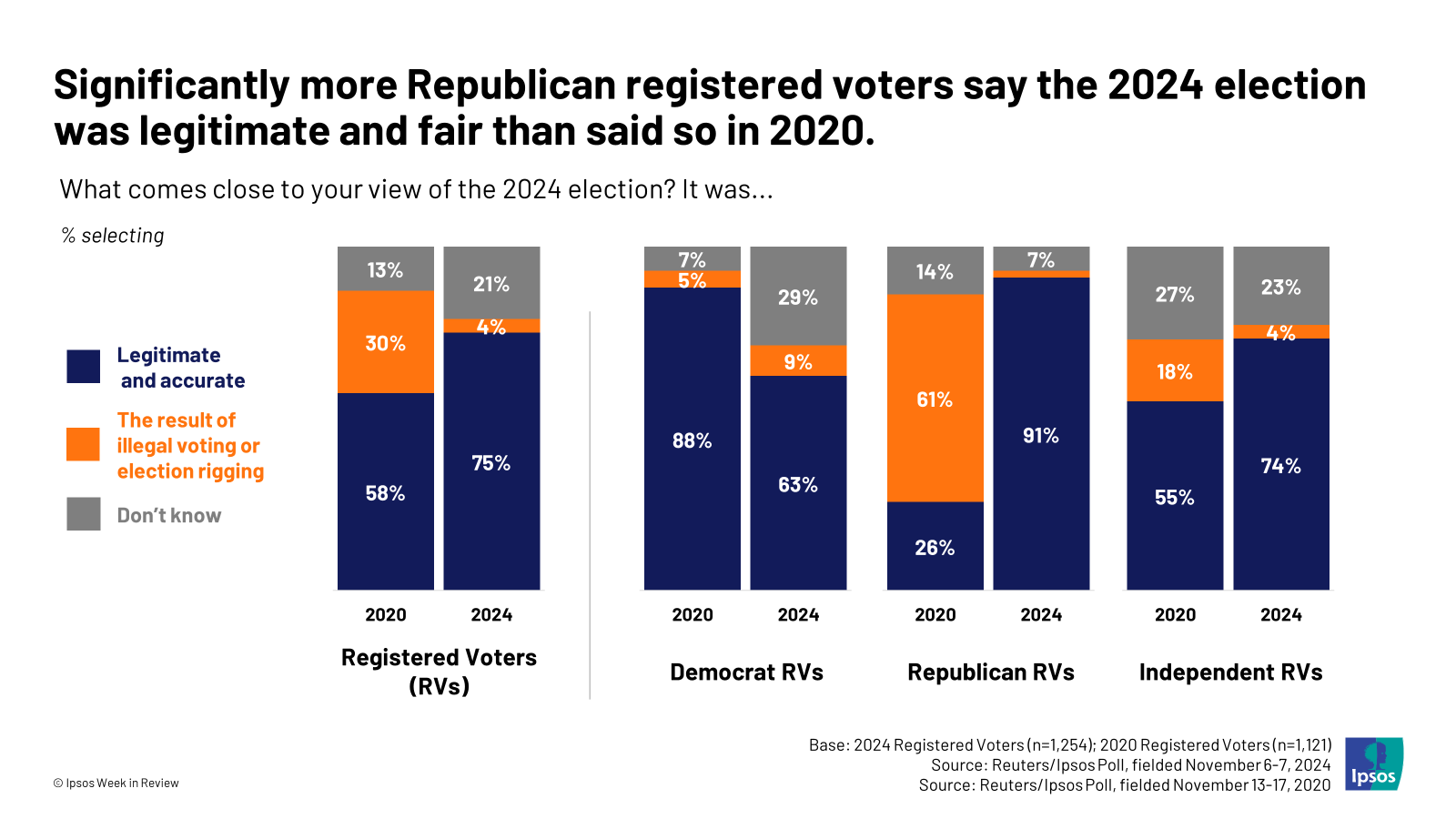

Five public polling trends that defined 2024
2024 was a busy year.
Between assassination attempts, major political shifts, the lingering effects of historic inflation and a presidential election, trends in public opinion have been defining factors of how this year shaped out.
As the election winds down and we start training our eye on the new year, below are five charts on five key trends in public opinions that proved more impactful than not over the past year.
- Inflation went down, but that hasn’t cheered up consumers. Declining inflation doesn’t mean prices go down – prices are still up since before the historic inflationary periods of 2022. Evidently, consumers have still been feeling the crunch, with U.S. consumer sentiment remaining muddled compared to pre-pandemic highs. How long will it take for consumers to adjust to these higher prices? We will see.

- The election was a story of the economy. Consumers’ discontent with prices defined the 2024 presidential election. The economy, and specifically inflation, was consistently the main issue throughout the year. It was an issue that Americans favored Trump on throughout the year, helping him eke out a close, yet decisive, win in the 2024 election.

- 2024 was a major global election year. Across dozens of countries across the world, populism was on the ballot. In the U.S., the appetite for a strong leader to take the country back from the rich and powerful won out, with Trump defeating the incumbent Democrat in Vice President Kamala Harris.

- Bent but not broken. After Trump’s loss in 2020, Republican trust in elections declined and Democratic trust in elections rose. Election trust flipped after Democrats lost this cycle (a similar trend occurred after Democrats lost the White House in 2016). But ultimately, while the results of the election were divisive, they were not destructive.

- Holiday plans. In the U.S., Thanksgiving and the December holidays are getting close. About one in five Americans plan to travel more 100 miles or more for these big end-of-year holidays. However, some Americans plan on spending less than they did last year. Those affordability concerns are still with us.

This past year, 2024, was historic in so many ways, particularly when it comes to politics. However, politics doesn’t operate in a vacuum. What people can afford and whether they feel the system is working all factor heavily into their political calculation.
In that way, several key trends defined what we’ve already seen, such as the lingering effects of inflation and the desire for a strong leader to “take back” the country. What’s next? Soon, for many families across the country, it will be turkey. From there, we will see.



